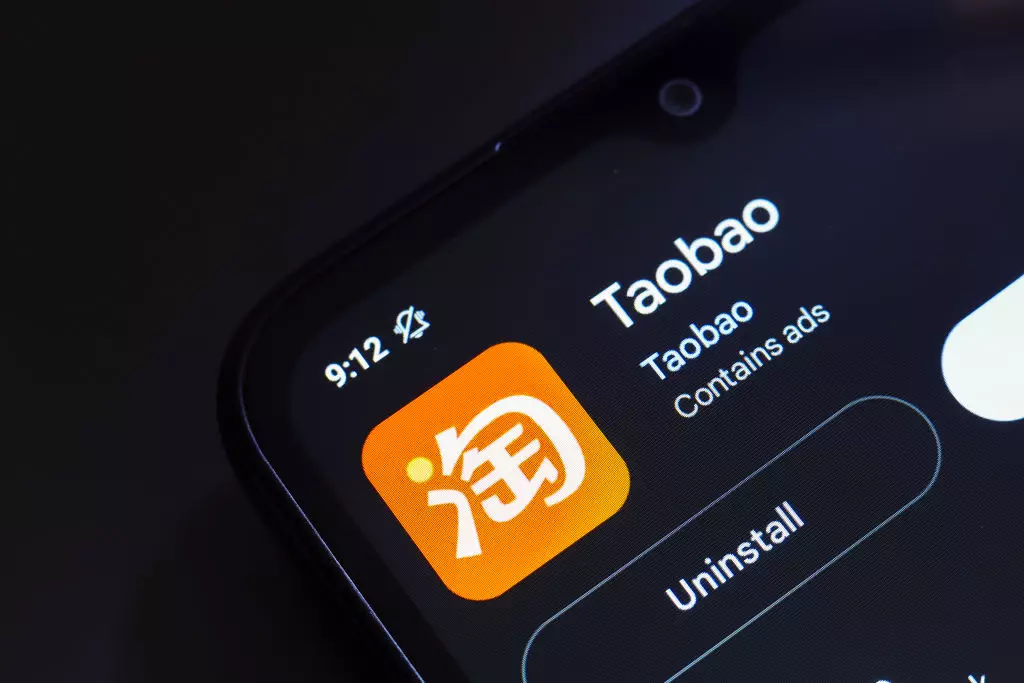The rise of Chinese e-commerce platforms like DHgate and Taobao in the United States has taken many by surprise, particularly as they claw their way into the top ten apps on the iOS App Store. Poor economic conditions, exemplified by President Trump’s tariffs on imports from China, have inadvertently redirected consumer interest towards these once-overlooked platforms. This phenomenon illuminates not just shifting consumer habits but also raises questions about the evolving dynamics of global trade and luxury branding.
The Impact of Social Media on Consumer Behavior
A dramatic surge in app downloads has been fueled by engaging TikTok videos featuring Chinese manufacturers, revealing behind-the-scenes insights into the production of luxury goods. This unique approach capitalizes on the curiosity and skepticism of U.S. consumers, who have been subjected to rising prices and markups from established luxury retailers. The striking claims of luxury items being manufactured in China and subsequently repackaged abroad resonate deeply with consumers. By showcasing direct access to manufacturers, these platforms offer more than just an alternative shopping option—they present an opportunity for consumers to reclaim agency over their purchasing choices.
The dynamics of social media cannot be underestimated in this context. TikTok, particularly, has emerged as a powerful tool for driving awareness around alternative shopping habits. The platform’s ability to virally promote content has played an instrumental role in generating interest among consumers who were previously loyal to big-name brands. Consequently, shopping trends are shifting dramatically, with a pronounced tilt towards affordability without sacrificing style.
Exploring the Numbers: An Unprecedented Growth Cycle
Statistical data tells a compelling story about the rapid rise in popularity of these apps. Notably, Taobao’s estimated downloads skyrocketed from 30,000 to approximately 185,000 in just a month, a staggering 514% increase. This acceleration in downloads indicates both a newfound trust in these platforms and an eagerness amongst consumers to explore options that promise significant savings.
In a matter of days, Taobao’s rankings moved from being relatively obscure to overtaking industry giants such as Walmart and Amazon. The app climbed from the No. 49 position among shopping apps to No. 2. Similarly, DHgate has established itself firmly in the U.S. mobile commerce landscape, proving that consumer sentiment can pivot dramatically based on external factors like tariffs and economic policy.
The Role of Perception in E-Commerce
The question remains: why are U.S. consumers so willing to embrace these platforms, knowing that purchasing from overseas does not exempt them from tariffs? The allure seems to stem from the perception that buying directly from manufacturers equates to savings. In a world where consumerism is often intertwined with savvy financial practices, platforms like DHgate and Taobao present a tantalizing alternative to high-priced luxury goods. It sends a signal that value can still be found by looking where traditional avenues have failed.
However, this shift is not without risks. The adage “buyer beware” now rings truer than ever. While the promise of quality goods at competitive prices is enticing, consumers must be diligent. Reviews and images from other buyers become non-negotiable methods for gauging product quality. The necessity for conscious consumption in the e-commerce realm has never been more pronounced; it stands as a reminder that cost savings must be balanced with due diligence.
A New Era for Luxury and Consumer Choices
The rapid ascension of platforms like Taobao and DHgate reflects an evolving shopping landscape, one where traditional luxury brands might be forced to rethink their pricing strategies. As more consumers gravitate towards budget-friendly, direct-from-manufacturer options, the foundations of luxury branding may find themselves shaken. U.S. consumers are no longer passive participants; they are now active players in a global marketplace that transcends geographical boundaries.
As the story of e-commerce unfolds, it becomes evident that understanding the interplay between tariffs, social media influence, and consumer behavior could shape the next chapter of global commerce. This transformation is not merely about lower-priced goods but represents a significant shift in consumer consciousness—an awakening to the potential of direct purchasing and the desire for access to luxury goods without the inflated markup. The future of shopping may very well hinge on this awareness, inviting deeper examination into how global economies can adapt in a more interconnected marketplace.

